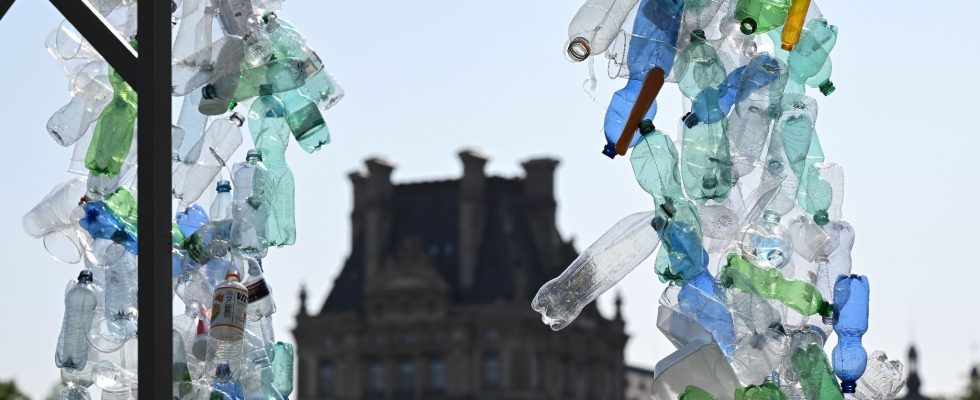The task looks delicate. Representatives of 175 countries have been meeting since Monday, May 29 at UNESCO headquarters for five days, to participate in a second negotiation session aimed at reaching a treaty that would put an end to plastic pollution in the world. Other meetings are already scheduled, but the process is progressing as the parties announce. The text could be adopted at a diplomatic conference in mid-2025.
“The primary objective must be to reduce the production of new plastics and to ban as soon as possible the most polluting products – such as single-use plastics – and the most dangerous to health”, explained President Emmanuel Macron, in a video released at the opening of the conference on Tuesday.
This Monday, the negotiations have barely started, but two camps already seem to be taking shape. About fifty countries, notably Canada, Chile, France, Rwanda or Norway, as well as the European Union, are campaigning for the end of plastic by 2040. But other nations are more cautious, such as the China, the United States, Saudi Arabia and OPEC member countries in general. During the negotiations, they notably insisted on the need for better waste management and more efficient recycling.
Constantly increasing production
If 175 countries have decided to sit around the table in order to legislate on the subject, it is because the production of plastic has grown exponentially since the 1950s. It has almost doubled between 2000 and 2020, to reach the 460 million tons annually. According to the Organization for Economic Co-operation and Development (OECD), it could also triple by 2060 if no binding policy decisions are taken.
This inflation of production also has a concrete effect on global warming. It represented 1.8 billion tonnes of greenhouse gases emitted in 2019. In total, plastic weighs the equivalent of 3.4% of global emissions. This figure could more than double by 2060, again according to the OECD.
Too little recycling
In the European Union, 39% of plastic is used to create single-use packaging. In general, plastics have a very short lifespan. 81% of objects are used for less than a year. 22% are abandoned (wild dumps, open-air incineration or discharge into nature) and less than 10% are recycled. The vast majority of this waste therefore ends up in landfills, or on the surface and at the bottom of the oceans.
In nature, this waste has a detrimental effect on fauna and flora. According to the UN, 100,000 marine mammals die each year due to ingestion or entanglement in plastic debris. Some of this waste is also reduced to particles, which are then ingested by humans. According to a study by the World Wide Fund for Nature, people swallow the equivalent of 5 grams of plastic per week, the weight of a credit card.
